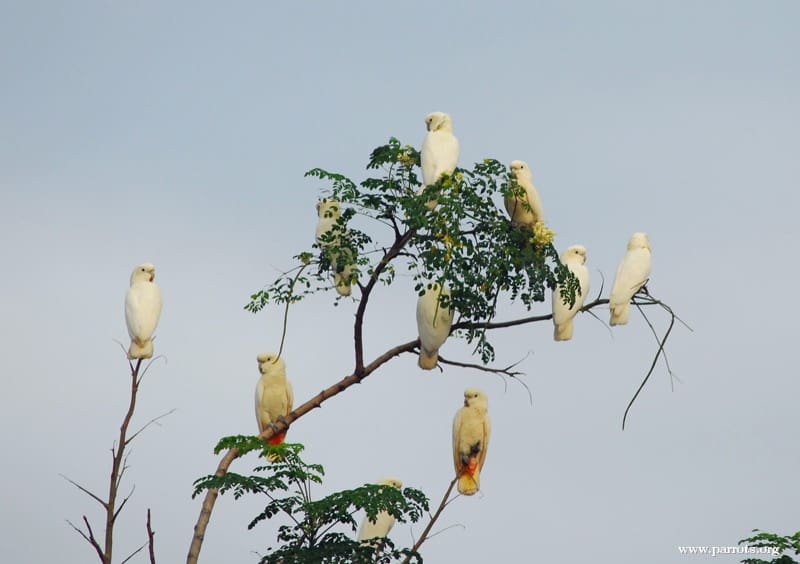The Red-vented or Philippine Cockatoo (Cacatua haematuropygia) is listed as Critically Endangered in the wild due to extensive habitat loss and exploitation for the wildlife trade.
The WPT funded travel to the Philippines for a researcher to observe and evaluate the local captive population and meet with Philippine partners and SagipKatala (Save the Cockatoo) movement. From there, an intensive species conservation program, the Philippine Cockatoo Conservation Program (PCCP) was begun by the Katala Foundation. By 2005, the organisation began to plan and build the Katala Institute for Ecology and Biodiversity Conservation, designed as a centre for environmental education, research and possibly captive breeding for reintroduction.
Status: IUCN Critically Endangered / CITES Appendix I
Population: 650-1120 individuals, declining overall but some populations increasing.
Threats: This cockatoo has suffered a rapid decline of 80% in 40 years. Trapping has been heavy and deforestation is severe. Typhoons are an emerging threat.
Range: Restricted to Philippines where once common, now only on Palawan Islands and the Sulu Archipelago.
Natural history: The Red-vented Corella or Cockatoo is seen in lowland primary or secondary forest and mangrove, with occasional forays into cultivated areas. Its wild diet includes seeds, fruit, nuts, flowers, the bark of some trees, and berries. This bird is noisy and fairly conspicuous, gathering in groups to feed and roost. It forms larger groups outside of the breeding season. Individuals are said to escape winged predators by rapid, precise flying techniques.

